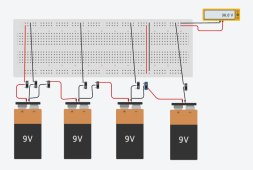Hi everybody, first time poster, avid reader so far. Very much enjoying this forum 
Here is my problem:
I have four solar panels, all of them have these specs: 590W max power, 53Voc, 44Vmp, 13 Amp max.
I want to be able to perform tests with 1,2,3 ou four panels in a serial array.
Some of the inverters I want to test need 1 panel, some may need more. You get the picture.
What I would love to do was to have an electric panel with all cables from the panels inserted, and "add" or "remove" each one from the bus via a switch/dc circuit breaker, etc...
I have limited electrical skills, so any help would be greatly apreciated
Thanks in advance!
Filipe
Here is my problem:
I have four solar panels, all of them have these specs: 590W max power, 53Voc, 44Vmp, 13 Amp max.
I want to be able to perform tests with 1,2,3 ou four panels in a serial array.
Some of the inverters I want to test need 1 panel, some may need more. You get the picture.
What I would love to do was to have an electric panel with all cables from the panels inserted, and "add" or "remove" each one from the bus via a switch/dc circuit breaker, etc...
I have limited electrical skills, so any help would be greatly apreciated
Thanks in advance!
Filipe
Last edited:



